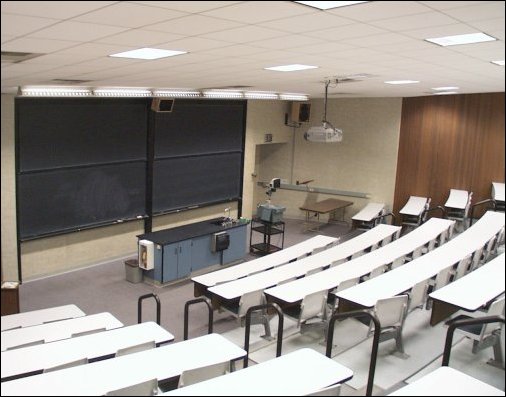Input-Output Table
The commonality between the movies “Pulp Fiction” and “Love Actually” is that they both follow an omnibus format. Omnibus format refers to a storytelling structure where multiple episodes or stories are presented as independent narratives, but the characters in each episode are interconnected, ultimately forming one overarching theme. Each episode may appear independent, but they are interconnected in the end. This characteristic of omnibus format can also be found in input-output tables in the context of industry relations, where you can analyze how various products and individual industries within a national economy are interconnected.
Many people have experienced riding in a “transparent elevator” in a newly constructed building. In a traditional enclosed elevator, it can be difficult to feel the sensation of moving up and down. However, in a transparent elevator, you can see the cables going up and down, allowing you to perceive the elevator’s three-dimensional movement between floors. Just like this transparent elevator, when you carefully examine input-output tables (I-O tables) in the context of industrial relations, you can gain a comprehensive view of how a particular product travels through various stages of production and specialization before ultimately reaching your hands. It provides a three-dimensional perspective on the intricate web of industrial interconnections.
When looking at the overall industry, no single product can exist independently. This is because to produce a multitude of intermediate and final goods, other products are invariably required as materials. Input-output tables systematically allow us to understand these interrelationships between products and industries, both by product and by industry. These tables provide a structured way to comprehend how different products and industries are interconnected within an economy.
Input-Output Table
In a national economy, goods and services produced through the input of factors of production such as labor and capital are either used as intermediate inputs for the production activities of other sectors or purchased by final consumers. Input-output tables systematically represent the flow of these goods and services produced in the national economy. In other words, they divide the production activities of the national economy into various industries or products and record transactions, input of production factors, as well as consumption, investment, and exports over a specific period in a clear and concise manner.
Therefore, input-output tables allow us to understand the industrial structure, supply and demand structure, and changes in production technology using intermediate inputs. They provide valuable insights into how different sectors and products are interconnected within the economy, helping policymakers and analysts make informed decisions and understand the overall economic dynamics.
Concepts of Input-Output Table
Input-output tables are statistical tables that meticulously record all transactions related to the production and disposal of goods and services within an economy of a specific country over a designated period, typically one year. These tables follow specific principles and formats to document these economic activities comprehensively.
In the context of input-output tables, there are two sectors referred to as the “domestic sector” and the “foreign sector.” The domestic sector records transactions related to the production and exchange of goods and services within the country’s economy. It includes both intermediate demand (transactions between domestic sectors) and intermediate input (transactions between industries within the domestic economy). This domestic sector is often considered the “internal” or “native” sector.
On the other hand, the foreign sector records transactions related to international trade, such as exports and imports. It includes transactions between the domestic economy and the rest of the world. This foreign sector is often considered the “external” sector.
In the context of input-output analysis, the transactions between domestic sectors (internal transactions) are of particular importance. Analyzing internal transactions allows economists and policymakers to assess the impact of changes in final demand, such as changes in consumption or investment, on production, value-added, employment, and various sectors within the economy. It provides a detailed understanding of how changes in final demand affect the different parts of the economy, both at a macroeconomic level and within specific industries.
The composition of an Input-Output table
The input-output table (산업연관표) is composed of two main components: the Supply and Use Tables (공급사용표) and the Input-Output Table (투입산출표).
Supply and Use Tables (공급사용표): These tables are structured based on industries (산업) and provide information about production and supply of goods and services within an economy. They show how industries produce and supply goods and services to other industries and final demand sectors. Supply and Use Tables are typically used to derive the Input-Output Table.
Input-Output Table (투입산출표): This table is structured based on products (상품) and illustrates how various products are used as inputs in the production processes of different industries and how these industries contribute to the final production of products. Input-Output Tables are essential for understanding the interdependencies between industries and products within the economy.
In the System of National Accounts (SNA), it is recommended to construct the Supply and Use Tables first and then derive the Input-Output Table using mathematical methods. The Input-Output Table focuses on products and may assume that each industry produces only one product, which can be a limitation for a comprehensive analysis of economic structure.
On the other hand, the Supply and Use Tables provide data based on industries and offer a more detailed and versatile view of production and supply relationships. They not only aid in understanding economic structure but also play a crucial role in maintaining consistency among various national accounts statistics, such as national income accounts and balance of payments.
To enhance data consistency and comply with international standards, many countries, including South Korea, have started producing both Supply and Use Tables and Input-Output Tables in their national accounting systems. This approach ensures better accuracy and alignment among different economic statistics.
Supply Table
A Supply and Use Table is composed of a Supply Table and a Use Table. The Supply Table indicates which products are produced and supplied by each industry. It takes the form of a matrix, where industries are represented horizontally and products are represented vertically. Vertically, the Supply Table records how much of each product is produced (or supplied) by each industry. Horizontally, it shows how much of each product is produced and supplied by each industry, indicating the supply structure of products across industries.
Now, let’s examine below table to understand the Supply Table. In this economy, there are four industries: Wheat Farming, Milling, Snack Manufacturing, and Ramen Manufacturing. The Ramen Manufacturing industry also engages in Snack Manufacturing.
When looking vertically, you can see that:
- Wheat Farming produces 100,000 KRW worth of wheat.
- Milling produces 400,000 KRW worth of wheat flour.
- Snack Manufacturing produces 400,000 KRW worth of snacks.
- Ramen Manufacturing produces 250,000 KRW worth of ramen and 100,000 KRW worth of snacks.
This information illustrates how each industry produces different products, and you can see the values in thousands of Korean Won (KRW) for each product they produce. The Supply Table presents the supply structure of products across these industries.
Horizontally, the Supply Table shows which industries produce each of the products: wheat, wheat flour, snacks, and ramen.
For example, regarding snacks:
- The total output of snacks is 500,000 KRW.
- Snack Manufacturing produces 400,000 KRW worth of snacks.
- Ramen Manufacturing produces 100,000 KRW worth of snacks.
This information indicates that snacks have a total output value of 50,000 KRW, with Snack Manufacturing contributing 40,000 KRW and Ramen Manufacturing contributing 10,000 KRW to the production of snacks. This illustrates how different industries are involved in the production of various products.
On the other hand, when you add the import amount to the domestic production output, you get the total supply amount. For products like wheat flour, snacks, and ramen that have no imports, their production output and total supply amount are the same. However, for wheat, you can see that it was imported from abroad for 100,000 KRW, making the total supply within the economy 200,000 KRW. This illustrates how imports contribute to the overall supply of goods within the economy.
| Industrial Output by Sector |
|
|
| |||
| Wheat Farming | Milling | Snack Manufacturing | Ramen Manufacturing | Total Output | Income | Total Supply Amount |
Wheat | 100,000 | 0 | 0 | 0 | 100,000 | 100,000 | 200,000 |
Wheat flour | 0 | 400,000 | 0 | 0 | 400,000 | 0 | 400,000 |
Snacks | 0 | 0 | 400,000 | 100,000 | 500,000 | 0 | 500,000 |
Ramen | 0 | 0 | 0 | 250,000 | 250,000 | 0 | 250,000 |
Total Output | 100,000 | 400,000 | 400,000 | 350,000 |
| ||
Use Table
A Use Table is a table that illustrates how supplied products were used or consumed. Similar to a Supply Table, it takes the form of a matrix, with industries represented horizontally and products represented vertically. Vertically, the Use Table records the intermediate inputs and value-added used in the production activities of each industry. In other words, it shows the input structure by industry.
In each industry, the intermediate inputs used to produce final output are recorded. These intermediate inputs are the materials or components used in the production process and are known as intermediate inputs. Additionally, it captures the value-added created through production activities. Value-added represents the value created by factors of production like labor, capital, and land, and includes wages, interest, profits, and other forms of value generated.
Therefore, the value of each product is the sum of the cost of intermediate inputs purchased for production and the value-added generated during the production process. Use Tables provide insights into how products are utilized and what goes into their production, including intermediate inputs and value-added components.
The horizontal direction of a Use Table represents the details of how supplied products were used, either as intermediate demand or final demand. When the output produced by an industry is used as an intermediate input for the production of another product, it is referred to as intermediate demand. On the other hand, if the output is used for consumption, investment, or export, it is categorized as final demand.
The provided information describes a Use Table that has been created using the Supply Table as a basis. In this Use Table, it is assumed that there is an initial stock of 50,000 KRW worth of wheat seeds.
The vertical direction of the Use Table represents the production activities of each industry.
Wheat Farming: Wheat Farming started with an initial stock of 50,000 KRW worth of wheat seeds. They sowed these seeds in the spring and harvested and sold 100,000 KRW worth of wheat in the fall, generating 50,000 KRW worth of value-added.
Milling: The Milling industry purchased 100,000 KRW worth of wheat from Wheat Farming and imported 100,000 KRW worth of wheat from abroad. They produced and sold 400,000 KRW worth of wheat flour, generating 200,000 KRW worth of value-added.
Snack Manufacturing and Ramen Manufacturing: Both industries purchased wheat flour as a raw material and produced and sold snacks and ramen, generating 240,000 KRW and 110,000 KRW worth of value-added, respectively.
Therefore, the total value-added generated in this economy over the course of one year is the sum of the value-added generated by each of the four industries: 50,000 KRW (Wheat Farming) + 200,000 KRW (Milling) + 240,000 KRW (Snack Manufacturing) + 110,000 KRW (Ramen Manufacturing), which equals 600,000 KRW.
Horizontally, the Use Table illustrates how supplied products were utilized.
The 400,000 KRW worth of wheat flour was used as follows:
- 160,000 KRW was used by the Snack Manufacturing industry.
- 240,000 KRW was used by the Ramen Manufacturing industry.
The 500,000 KRW worth of snacks and 250,000 KRW worth of ramen were both used for private consumption.
In this way, the Use Table provides information on the input details for each industry’s production activities and the distribution of the produced products.
| Intermediate Demand | Final Demand | Total Demand | ||||||
Wheat Farming | Milling | Snack Manufacturing | Ramen Manufacturing | Private Consumption | Changes in Inventory | Other | |||
Intermediate Inputs | Wheat | 50,000 | 200,000 | 0 | 0 | 0 | -50,000 | 0 | 200,000 |
Wheat flour | 0 | 0 | 160,000 | 240,000 | 0 | 0 | 0 | 400,000 | |
Snacks | 0 | 0 | 0 | 0 | 500,000 | 0 | 0 | 500,000 | |
Ramen | 0 | 0 | 0 | 0 | 250,000 | 0 | 0 | 250,000 | |
Value-Added | 50,000 | 200,000 | 240,000 | 110,000 |
| ||||
Total Inputs | 100,000 | 400,000 | 400,000 | 350,000 | |||||
Input-Output Table
In an Input-Output Table, both rows and columns represent products, allowing for a comprehensive view of the supply and usage of products. Unlike industry-specific input structures found in Use Tables, an Input-Output Table displays product-specific input structures. Vertically, it records the intermediate inputs and value-added used for the production of each product, showcasing product-specific input structures. Horizontally, it represents the distribution structure of products, indicating how they are used as intermediate inputs for other products or as final demand.
The provided Input-Output Table is created based on the previous Supply Table and Use Table. First, it’s noticeable that the intermediate demand sector is categorized by product, unlike the Use Table. Next, the input structure for wheat and wheat flour is similar to the input structure of Agriculture and Milling in the Use Table, which is because these industries each produce only one product. However, Snack production is different from the Use Table as it occurs simultaneously in both Snack Manufacturing and Ramen Manufacturing, which is why there is a difference in the industry input structure from the Use Table and the product input structure in the Input-Output Table.
According to the Input-Output Table, the production of 500,000 KRW worth of snacks required inputs of 200,000 KRW worth of wheat flour and 300,000 KRW worth of intermediate inputs. This means that the value-added generated by snack production is 300,000 KRW.
The reason why the input amount for wheat flour and value-added is higher in the Input-Output Table compared to the Use Table for Snack Manufacturing is that the Input-Output Table includes both the intermediate inputs and value-added from the production of snacks by the Ramen Manufacturing industry.
On the other hand, the Final Demand sector shows private consumption for both snacks and ramen, as well as changes in inventory for wheat. The amounts in the Final Demand sector match those in the Use Table, as both the Use Table and Input-Output Table represent final demand on a product basis.
In the examples provided in the tables, you can see that the industry-specific output values in the Supply Table match the corresponding industry-specific input values in the Use Table. Similarly, the product-specific supply values in the Supply Table match the product-specific demand values in the Use Table. Additionally, the product-specific output and income values in the Supply Table also match the product-specific output and income values in the Input-Output Table.










